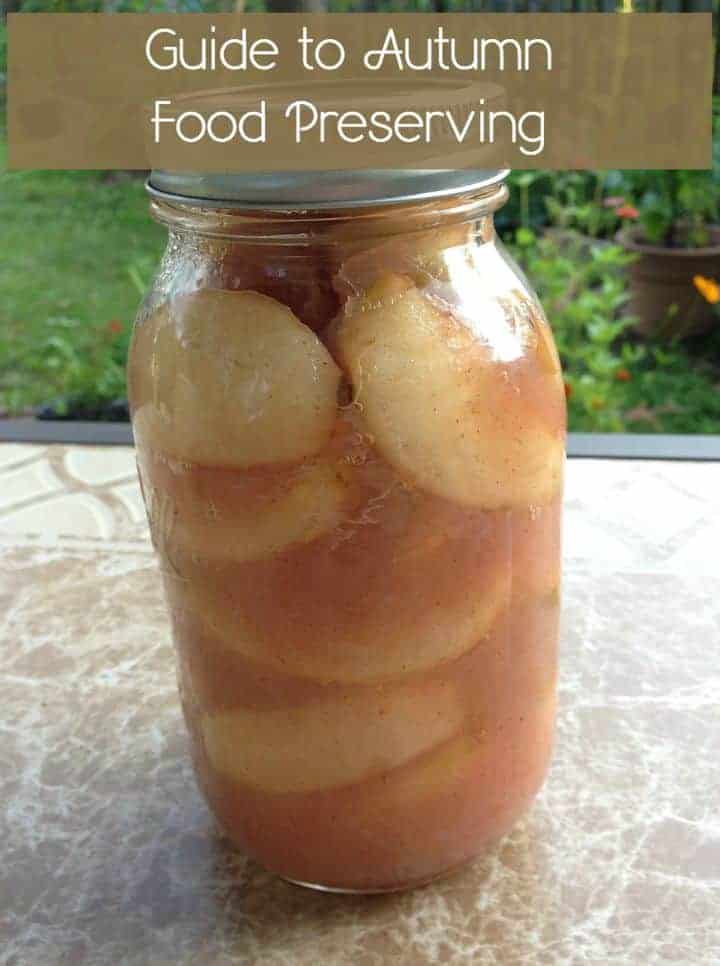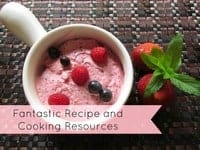Autumn food preserving is a great way to keep all those delicious fruits and veggies tasting fresh long after the season has ended. Food preserving and autumn days are a match made in heaven, especially in cold climates. Our fruits and vegetables during winter are tasteless. I still buy them to get my daily portions of fruits and veggies but I don’t enjoy eating them.
With all the fresh produce available in the farmer’s market during fall, I try as much as I can to can and preserve. By doing this I am sure to eat delicious produce. It is also a great way to save money. Instead of buying a canned tomato for $2 or $3, I buy a $30 box that can yield around 20 cans. There are two common ways to preserve your autumn harvest: canning and freezing.
Related: What is the Best Way To Keep Your Greens Longer?
Here is your guide to autumn food preserving:
*Affiliate links included below.
When it comes to canning autumn fruits and vegetables, there are two methods: water-bath and pressure canning.
Water-bath is the most popular method of canning.
This method is only ideal for acidic foods though such as fruits, jams and jellies. It is also the method you want to use for salsas, relishes, pickles and sauces. Foods that are low in acid are easy to preserve but they need extra attention so they don’t spoil. It is for this reason foods that are low in acid need to be heat processed at 240 degree temperature. With water-baths, the temperature only gets to 212 degrees. This is especially true for most vegetables like asparagus, green beans, beets, carrots and corn along with meats, poultry and seafood.
Vegetables and fruits can also be frozen.
Both can last up to 6 months in your freezer.
Vegetables need to be blanched in boiling water before freezing. Blanching times depend on the vegetable being frozen but range from 1-5 minutes. After blanching, allow to cool in cold water, completely drain and package in freezer bags. If your budget allows, consider investing in a food saver. Some veggies like turnips, carrots and cabbage need about ½ an inch head space in the bag while veggies like cauliflower, broccoli and Brussels sprouts don’t need any head space.
Fruits should be frozen in rigid plastic containers or any container that is moisture-proof. Most fruits can be frozen like berries, apples, peaches and cherries. Berries and cherries should be frozen not long after they are harvested while pineapples, peaches, apples, apricots and plums need to fully ripen once they are harvested before freezing. Fruits should also be prepared before freezing, such as removing stems and pits and peeling or slicing them, if that is how they are to be used. Fruits should be frozen in syrup for best results when cooking after they are thawed. A syrup can be made with 4 cups of water and 1 ¾ cups of sugar.
I hope you have fun with all your autumn food preserving! You can make some really great stuff later on in the season!



I have really been wanting to give canning a try – thanks for the tips!
I have started canning, but I know that there’s more I could do to store yummy fruits & veggies. A full pantry brings me an unusual amount of joy.
I want to learn how to do this so bad. I will use some of your tips. Thank you!
Thanks for sharing these tips. Being budget conscious, we must think of ways like this to extend the life of the fruits and vegetables we purchase. I hate to throw out food because I know somewhere, there is a starving child.
I have always wanted to trying canning fruit. Sounds like the perfect time to give it a try.
I do not do too much food preservation anymore. We did quite a bit when I was young but I no longer have a garden. I to find that if you can get sweet corn at a good price, that it is easy to prepare and freeze that for the winter. And nothing is better than fresh sweet corn in the winter.
Great idea for ways to preserve foods. There so many yummy items Id love to save to eat later.